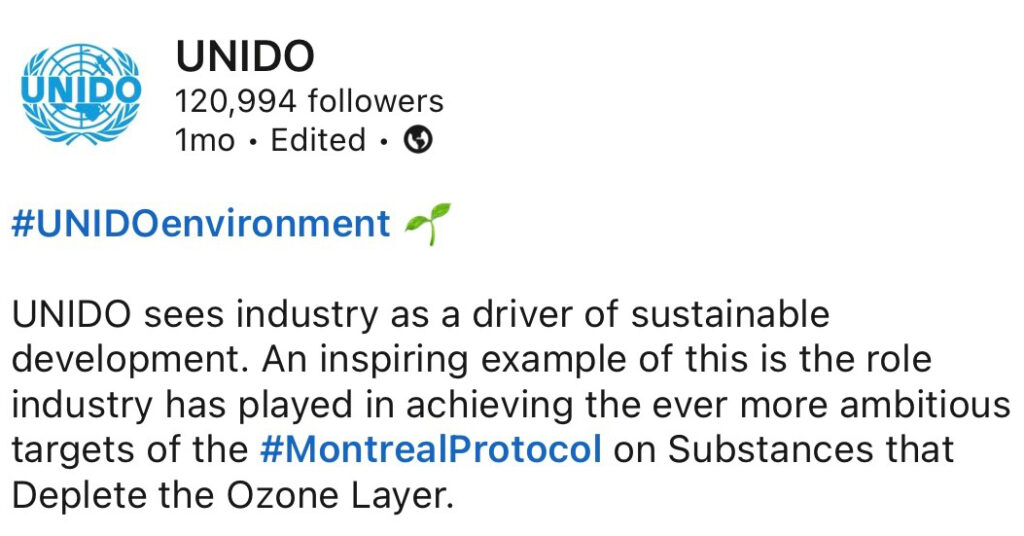Share this:
Welcome to the UNIDO Montreal Protocol Newsletter
In honour of International Women’s Day and Women’s History Month, we would like to highlight the importance of equal leadership and participation of women and men in our work– as decision makers, industry representatives, technicians and energy efficiency experts. We recognize the contribution of women and girls around the world, who are leading the charge on climate change adaptation and mitigation, to build a more sustainable future for all. This latest edition of our newsletter is dedicated to all of the women and men working together to protect the ozone layer and fight the climate crisis.
Gender equality starts with you: watch and share our video for International Women’s Day 2022, to help us promote gender equality today for a sustainable tomorrow.
Then, arm yourself with knowledge on one of the most successful Multilateral Environmental Agreements: the Montreal Protocol. Explore our Ask UNIDO section, where Elena Miceva – our Monitoring and Reporting Specialist at UNIDO’s Montreal Protocol Division, explains some of the key ingredients for its success.
To further build up your technical knowledge, read our feature article and learn from HVACR expert, Omar Abdelaziz, on how to improve the design of refrigerators to achieve greater energy efficiency. Then, have a look at our interview with Paulo Odu, National Refrigeration Expert from Uganda, to learn about the importance of education and skills training in Uganda’s refrigeration sector.
Finally, we invite you to explore our new Montreal Protocol Division website with topic-specific news, access to technical webinars, learning materials and more.
Happy reading!
Your UNIDO Montreal Protocol Division
ASK UNIDO
Monitoring and Reporting Specialist at UNIDO’s Montreal Protocol Division, explains the success of the Montreal Protocol as a unique Multilateral Environmental Agreement.
INTERVIEW
National Refrigeration Expert, Uganda, on the importance of education and skills training in Uganda’s refrigeration sector.
FEATURE ARTICLE
HVACR Expert and Professor at the American University in Cairo, outlines the crucial role of an energy efficient design for refrigerators, to reduce the carbon footprint of domestic cooling appliances.
QUIZ - Test your knowledge!

Test your knowledge!
Relaunch of the MPD website
To complete our interactive quiz below, visit our website and explore each section to find the right answers in the dropdown.
Since UNIDO’s Montreal Protocol Division has worked hand-in-hand with industries, governments, and institutions to find sustainable to ODS and substitute each ton of ODS with a less harmful substance or a new process.
For every industry and nearly every application there is a sustainable alternative. Wherever possible, UNIDO promotes the use of natural refrigerants, including hydrocarbons (HC), carbon dioxide (CO2), and which are both ozone and climate friendly.
Cross-cutting areas
UNIDO’s Montreal Protocol Division supports global by helping governments and industries to adopt climate-friendly technologies and practices, so as to promote industrial and economic growth, while safeguarding the environment.
Project Map
How many projects does UNIDOs Montreal Protocol Division currently have in the Republic of Uganda? A total of .
Dashboard
UNIDOs Montreal Protocol projects have a great impact on safeguarding the environment and fighting climate change. In 2020 71.8M tons of CO2 emission have been potentially avoided. This would be an equivalence of 15.3 M driven for one year.
NOTICE BOARD
Social Media
Explore the new Montreal Protocol Division website with topic-specific news, stories and learning materials
Events
Tune into the recording of UNIDO’s webinar: “Climate friendly, low GWP refrigerants for room air-conditioning”
Notes
-
Spotlight

Upcoming: Philippines’ CCI-Hub is hosting a technical training workshop on “Advanced Technologies for Commercial Food Retail”.
Notes
-
Social Media

Learn about online events in the cooling sector and stay up-to-date with our projects around the world by following our brand-new LinkedIn channel
Notes
-
Events

In honor of World Refrigeration Day we hosted the Kigali in Action Webinar on the 26th of June for our trusted partners.
YOU ASK, WE ANSWER!
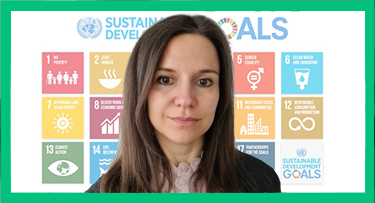
You Ask, We Answer!
Elena Miceva, Monitoring and Reporting Specialist at UNIDO’s Montreal Protocol Division, explains the success of the Montreal Protocol as a unique Multilateral Environmental Agreement.
(8 minutes reading time)
The key ingredients for success behind the Montreal Protocol
The Montreal Protocol on Substances that Deplete the Ozone Layer entered into force in 1987. It was adopted after scientists, industries and policy makers proved that man-made chemicals used widely in global industries were harming the ozone layer -threatening life on earth- and that only with immediate global action, this process could be reversed. At one occasion, the former UN Secretary General, Mr. Kofi Annan remarked that “perhaps the single most successful international agreement to date has been the Montreal Protocol”. Today, thanks to global efforts, the ozone layer is healing.
What is the unique recipe that makes the Montreal Protocol so successful?
1ST INGREDIENT: GLOBAL RATIFICATION
The first and simplest answer is that it has been globally ratified. No global environmental issue can be tackled without the involvement of all countries, no matter how big or small, developed or developing. The success of the Montreal Protocol can largely be attributed to the willingness of every single country in the world to work together and tackle this important issue.
2ND INGREDIENT: STAGED APPROACH AND COMPLIANCE MONITORING
Another major contributor to the Montreal Protocol’s success is the staged approach to phasing out the harmful chemicals called ozone depleting substances (ODS), as well as the close monitoring of compliance by countries with their reduction targets.
All countries in the world are so-called parties to the Montreal Protocol, which are further divided into two large groups:
- Article 5 countries[1] or in plain terms ‘developing countries’ and
- Non-article 5 countries[2] or in plain terms ‘developed countries’.
For both groups, different reduction schedules apply. While non-article 5 countries are required to phase out the controlled substances on their own, Article 5 countries may request financial assistance for implementing projects that will help them phase out controlled substances. The financial assistance comes from the Multilateral Fund (MLF), comprised of annual financial contributions from all non-Article 5 countries.
To see the table for Controlled substances and compliance schedule click here
Parties to the Montreal Protocol are required to submit an annual report on their consumption of ODS substances. The consumption equals quantity of ODS manufactured, plus ODS imported, minus ODS exported. The report submitted by all Parties to the Montreal Protocol is due by the 30th of September of the following year, covering the consumption for the previous year. This so-called Article 7 data report is submitted to the Ozone Secretariat. If a country’s consumption for a particular year is above the reduction target, then this country will be in noncompliance and special measures may apply.
In addition to the Article 7 data report, countries that request financial assistance for phasing out their ODS and meeting the reduction targets (i.e. Article 5 countries) are also required to submit the so-called Country Programme (CP) data report to the Multilateral Fund Secretariat (MLFS). The difference between the Article 7 and CP data report is that in the CP data report, the ODS consumption is further disaggregated by sectors. This helps with understanding in which sectors ODS are used and what kinds of projects should be financed in order to help countries successfully phase out their ODS consumption. If a country has not submitted its CP data report, it cannot benefit from the financial assistance.
3RD INGREDIENT: EXPERIENCED IMPLEMENTING PARTNERS
Article 5 countries themselves cannot submit project proposals or request funding from the Multilateral Fund directly. They need to approach one of the four implementing agencies, namely the United Nations Industrial Development Organization (UNIDO), United Nations Environment Programme (UNEP), United Nations Development Programme (UNDP), the World Bank or some of the bilateral agencies[5]. In his speech at the last meeting of the Executive Committee, the outgoing Chief Officer of the Multilateral Fund Secretariat, Mr. Eduardo Ganem, referred to the implementing agencies as the “fantastic four”.
Implementing and bilateral agencies have the technical expertise and organizational modalities that are particularly useful for conceptualizing, developing and implementing projects in line with the international financial and compliance standards. For example, UNIDO has a long history of helping countries develop their industries in a sustainable and inclusive manner. This is especially important for the implementation of Montreal Protocol projects. Once a country approaches one of the implementing agencies, they will develop projects on behalf of the country, in line with the MLF project guidelines, and will submit them to the MLF Secretariat for review. The MLF Secretariat screens documents submitted by implementing agencies before passing them on to the Executive Committee for their approval.
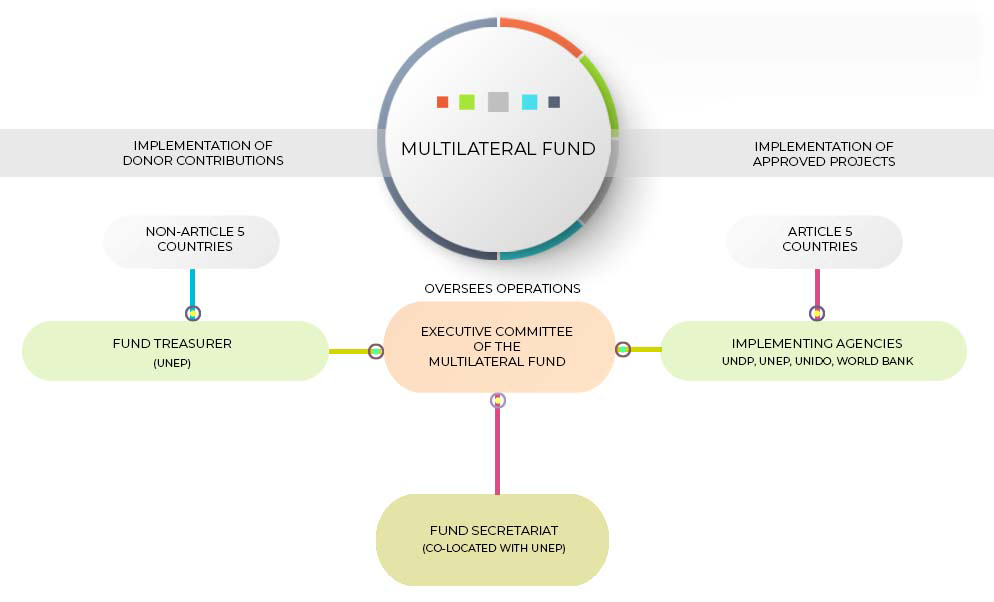
4TH INGREDIENT: THE EXECUTIVE COMMITTEE LED BY THE PARTIES
The Executive Committee is responsible for developing policies, procedures, guidelines and criteria, approving the Fund’s budget and business plan, approving programmes and projects and overseeing the operation of the Fund. The Committee comprises of seven members from Article 5 parties and seven from non-Article 5 parties, selected each year at the Meeting of the Parties[6]. The MLF Secretariat can make recommendations, in line with the approved policies, but it is the Executive Committee that makes decisions on which projects are to be approved, not approved, cancelled or closely monitored. Under normal circumstances, the Executive Committee meets twice per year. The exact dates are decided by the Executive Committee but usually the meetings take place in June and November/December. All documents that will be on the agenda for a particular meeting are posted latest four weeks before the meeting takes place. However, the preparations start even earlier. Implementing agencies begin to submit project proposals, reports and other documents to the MLF Secretariat already 16 weeks (four months) before the start of the meeting at which these documents will be reviewed and decided upon. In this period, the MLF Secretariat makes sure that submitted documents are in line with the guidelines and include all necessary components including countries’ endorsement letters, which confirm which implementing agency the country has chosen to work with. The next step is to review whether the documents are prepared in line with the agreed policies and cost-guidelines. Any open issue is discussed between the MLF Secretariat and the implementing agencies on behalf of the concerned Article 5 countries. Once the review process is completed, the documents are posted on the MLF website[7] with a recommendation for blanket approval (i.e. no policy or cost issues and the project/report can be approved without further discussion at the meeting) or for individual consideration (i.e. there may be some policy or cost issues, agreement between implementing agencies representing and the MLF Secretariat could not be reached or the project is new – not a tranche of ongoing project – therefore discussion is needed at the meeting following which a decision can be made).
5TH INGREDIENT: TRANSPARENT AND UNIFORM DECISION MAKING PROCESS
How do Executive Committee members come to agreements, considering that half are Article 5 and the other half are non-Article 5 countries?
Negotiations at Executive Committee meetings can be long, however, the efforts are always directed at reaching an agreement and finding a solution that will meet everyone’s expectations. The goal of ensuring that all countries are provided with the required support to reach their reduction targets is paramount. The MLF Secretariat prepares policy documents, procedures, guidelines, criteria that are reviewed and approved at Executive Committee meetings. These are the starting point for preparing country programmes and projects. Documents prepared by the MLF Secretariat include a wealth of information and analysis prepared based on the submitted project documents and negotiations with implementing agencies. For any other information that may be needed, implementing agencies can be asked for their inputs. However, during these meetings, implementing agencies are only observers and can talk only if asked to.
How do implementing agencies plan their work and decide which projects they will submit?
In line with the MLF policies and countries’ eligibility, implementing agencies prepare, on a rolling basis, three-year business plans. In doing so, they also coordinate amongst each other especially for countries where more than one implementing agency is working, ensuring a coordinated approach. They also meet twice per year at the Inter-agency coordination meeting (IACM) organized by the MLF Secretariat. At these meetings, all ongoing issues for the upcoming Executive Committee meeting are discussed. Article 5 countries can approach any of the implementing agencies at any time for any kind of question, concern, feedback or idea they would like to share.
THE SECRET INGREDIENT? WE’RE ALL IN THIS TOGETHER
At first, it may seem as if the Montreal Protocol mechanism is quite complex, but its structure can also be added to the list of things that make this multilateral environmental agreement so successful. Projects are carefully planned and progress is closely monitored. All stakeholders have their own share of responsibilities and with everyone’s strong involvement, a checks and balances system is in place. The dedication of Article 5 countries in implementing these projects is crucial for the successful healing of the ozone layer. With the Kigali Amendment, we are now looking at a different challenge. Everyone’s commitment will again be extremely important if we hope to achieve the goals of the Kigali Amendment. The good news is that the system is already in place. Adjustments will need to be made in line with the policies to be introduced for the HFC phase-down projects, however, we will also need universal ratification of this important amendment if we would like it to be as successful as the Montreal Protocol and its previous amendments. The Montreal Protocol, universally ratified, has proven that it is possible for countries to come together with a common goal: protecting the ozone layer. By leading through example, we can repeat the achievements of the Montreal Protocol in the fight against climate change. The secret ingredient is global commitment.
Since I started with a quote from the former UN Secretary-General Kofi Anan , I will end with a quote from the current one, António Guterres: “Let us take encouragement from how we have worked together to preserve the ozone layer and apply the same will to healing the planet and forging a brighter and more equitable future for all humanity[8].”
[1] Article 5 countries are countries that are Parties to the Montreal Protocol and whose annual per capita consumption and production of Chlorofluorocarbons (CFCs) and halons is less than 0.3 kg on the date of entry into force of the Montreal Protocol or any time thereafter until 1 January 1999. The developing countries that meet these criteria are referred to as Article 5 countries.
[2] Contributions to the Multilateral Fund are provided by the non-Article 5 countries.
[3] “Group 1″ comprises the majority of Article 5 countries
[4] “Group 2” includes Bahrain, India, the Islamic Republic of Iran, Iraq, Kuwait, Oman, Pakistan, Qatar, Saudi Arabia and the United Arab Emirates.
[5] Non-Article 5 Parties can use up to 20 per cent of their annual contribution to carry out activities with developing countries on a bilateral basis.
[6] Membership of the Executive Committee in 2022: Developing countries (Article 5): Bahrain, Brazil, Chad, Cuba, Guyana, India and Zimbabwe; Developed countries (non-Article 5): Belgium, Canada, Finland, Italy, Japan, Romania and United States of America.
[7] Home – Meetings Archive (multilateralfund.org)
[8] https://unis.unvienna.org/unis/en/pressrels/2020/unissgsm1051.html
INTERVIEW
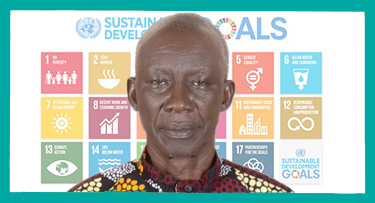
Interview with Paulo Odu
Paulo Odu, National Refrigeration Expert, Uganda, on the importance of education and skills training in Uganda’s refrigeration sector.
(4 minutes reading time)
What are the priority sectors and targeted activities in Uganda’s HCFC Phase-Out Management Plan?
Our biggest priority and greatest achievements under the HCFC phase-out management plan (HPMP) for Uganda has been in the reduction of HCFC consumption in the refrigeration servicing sector. To achieve this, we have worked hard to strengthen capacity building and training of refrigeration technicians across the country.
As a trainer and national refrigeration expert in Uganda, I am very happy with what we have achieved so far. With the support of UNIDO and the United Nations Environment Program (UNEP), we have trained over 300 practitioners in the refrigeration sector of Uganda.
What is the value of skills training in the refrigeration sector?
Working in the refrigeration sector offers technicians diverse and unique opportunities for professional growth. It encompasses a wide range of scientific knowledge and technical skills, so that anyone who is trained in this field is capable of taking on other skilled jobs, from electrical and electronic maintenance to mechanical engineering. By training refrigeration practitioners, we give them the chance to work in many different fields.
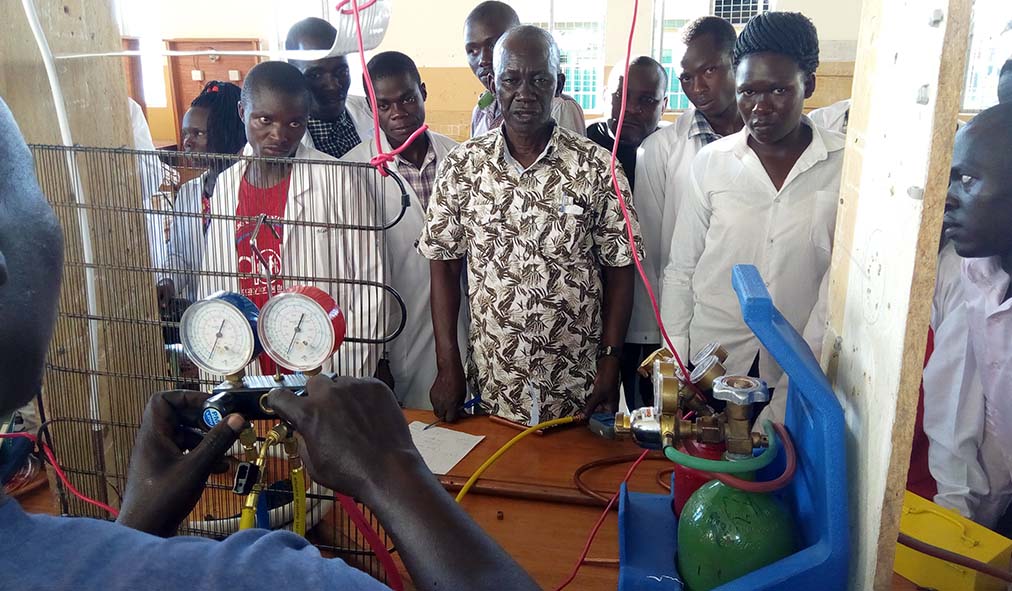
Besides the economic value of skills training in this sector, which translates into qualified workers and better employment opportunities, there is of course the environmental value. Skills training can reduce the risk of improper installation and poor maintenance of refrigeration systems, thereby reducing energy consumption, leakage rates of refrigerant, breakdowns and premature end of life of the systems. Proper training of service technicians therefore results in lower direct (refrigerant leakage) and indirect emissions (energy consumption) and lower costs for the operator or user.
In our training programme, we have categorized four-key elements required of refrigerator practitioners:
- The trainee must have knowledge of how a refrigerator works, and in particular an in-depth knowledge of electrical systems, an understanding of plumbing and design equations;
- The trainee must have the necessary skills to safely install and service refrigeration systems;
- The trainee must have basic equipment for doing the work; and finally
- The trainee must have positive attributes and work ethic.
When we carry out the training, we touch upon all four areas, in particular the attributes, that is to say, the employable skills. So that when the trainees complete their training and go out to the job market, they have the skills that can attract employment.
Who are the key partners working on this field in Uganda?
In Uganda, we have worked closely with the Kyambogo University, where all the training for refrigeration technicians and engineers has taken place. This is also where the first refrigerant recovery and reclamation initiative in Uganda began. I myself worked as a refrigeration trainer at Kyambogo University from 1994 – 2015.
The Uganda National Association for Refrigeration and Air-conditioning (UNARA) has grown throughout these years and thanks to the cooperation with UNIDO, we now have four new centres of excellence for vocational training. UNIDO has supported these training institutes through the provision of training equipment and tools, including refrigerant recovery machines, vacuum pumps, and hand-held electronic leak detectors. The training institutions are now better equipped to deliver a higher quality of training to refrigeration and air conditioning practitioners in Uganda.
What are the next steps and what is your vision for the future?
Now, with the support of UNIDO, we have expanded our training programme to four additional institutions. And if all goes as planned, we will be expanding to two more institutions to increase the number of skilled students, so that they can move into productive work.
The biggest challenge we face is reaching the practitioners in rural areas of Uganda. Some of them cannot come to us, because they do not have the means to reach us, so we need to go to them. We also need to make sure that they have the necessary tools to carry out their work.
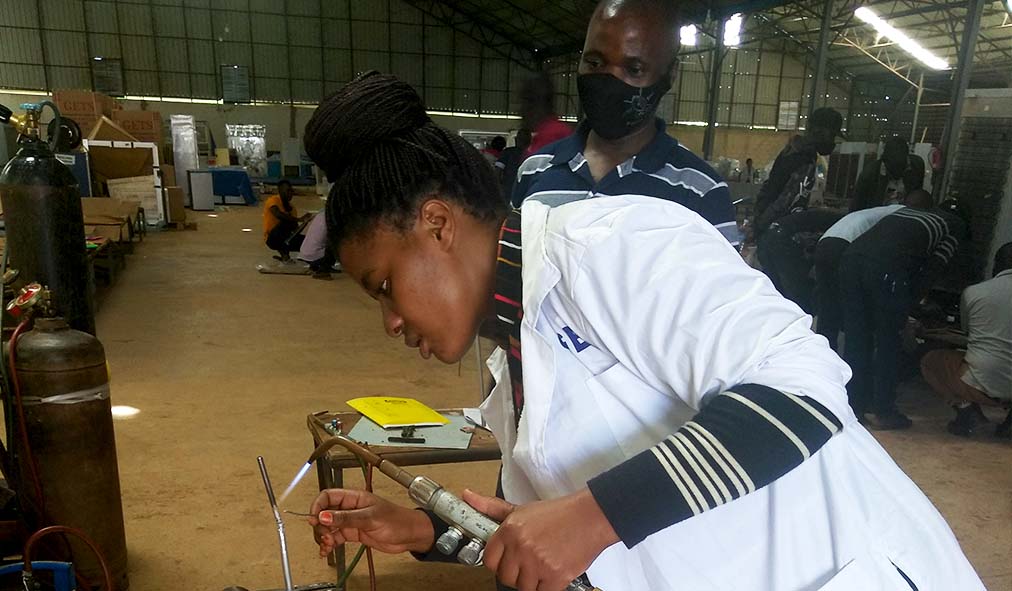
Over the past years, we have seen a growing demand for refrigeration and air-conditioning systems. Every new building relies on cooling systems, and all of these cooling systems need to be serviced by trained personnel to reduce damage and operational costs.
This is why we need to go beyond the capital city of Kampala and Kyambogo University. This is what we are now achieving together with UNIDO. We hope to keep expanding our vocational training centres and changing the lives and livelihoods of practitioners across the country.
FEATURE ARTICLE
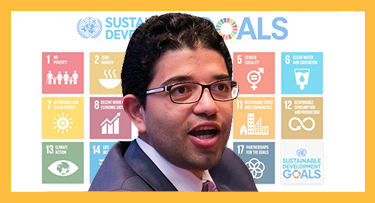
Refrigerators: from better design to greater efficiency
Omar Abdelaziz,
HVACR Expert and Professor at the American University in Cairo, outlines the crucial role of an energy efficient design for refrigerators, to reduce the carbon footprint of domestic cooling appliances.
(4 minutes reading time)
Owning a domestic refrigerator is becoming a staple in every household. Domestic refrigeration is important to ensure food safety, reduce food waste, and enhance the standard of living which directly contribute to several Sustainable Development Goals (SDGs). With the current population growth and the increased ownership of domestic refrigerators, it is important to ensure that they are efficient and environmentally friendly, in order to mitigate global emissions and avoid the need to build new harmful power plants to accommodate the increased electricity consumption. Domestic refrigeration consumes roughly 14% of the global residential electrical consumption with an estimated installed stock of more than 2 billion units. Hence, the transition towards cost-effective, efficient, and environmentally friendly refrigeration technologies is considered one of the most effective measures to reduce GHG emissions
Refrigerator manufacturers in developing countries are currently facing fierce international market competition and should strive to improve their designs to appeal to their customers, while also meeting local and regional minimum efficiency performance standards (MEPS). Furthermore, countries are now adopting labeling programs to create the needed market pull that, when combined with MEPS, create the synergy needed for continuous energy efficiency improvements. Finally, developing markets have their own challenges related to cost, component availability and accessibility, technology readiness, and technician training to fabricate and maintain the high efficiency, environmentally friendly domestic refrigerators.
According to United for Efficiency (U4E), energy efficient and environmentally friendly domestic refrigerators have the potential to reduce annual carbon equivalent emissions by 150 million Tons. The current best available technology can be up to 60% more efficient than baseline refrigerators. To seize this opportunity, UNIDO has pursued a program to develop guidelines for the design of green refrigerators that are energy efficient and environmentally friendly. This program includes capacity building, modeling tool development, and development of an online training module to train engineers in developing countries on the use of Commercial Energy Efficient Refrigerator Analysis “CERA”, a free modeling tool to enable the design of green refrigerators.
Some of the key enabling technologies for green refrigerators include the use of low global warming potential refrigerants, such as isobutane (HC-600a), variable speed compressors which may improve the efficiency by up to 30%, higher efficiency compressors with a potential of up to 25% efficiency improvement, high efficiency evaporator fans, and improved heat exchanger designs. The cabinet thermal loads play an important role in the refrigerator energy efficiency; however, these typically require significant capital cost investment for new mold development, accessories, and the potential pushback from consumers due to the undesirable impact on compartment volume.
UNIDO worked with 6 manufacturers across different geographical regions (Latin America, Africa, and the Middle East) to develop net-benefit and cost guidelines related to the different design options. In this study, UNIDO identified both the incremental capital cost and additional running cost for the different green technologies. The main findings were summarized in the “Guidance Report on net benefits and cost for energy efficient refrigeration design options” showing that there is a potential for up to 30% energy efficiency improvement that results in less than 20 USD additional manufacturing cost. The study further investigated the impact on national emissions reduction taking into account the national electric emissions.
In an effort to make CERA available for developing countries, UNIDO has created a Github repository that hosts the free modeling tool CERA and another open-source version written in python based on the legacy FORTRAN code. The open-source version of CERA lacks the user interface but enables the international community to continue to develop and expand the model features to accommodate new refrigerator cabinet designs, refrigeration cycles, and control algorithms.
A course titled “Design of Energy Efficient Environmentally Friendly Refrigerators” was added to the https://learning.unido.org/ to help develop the capacity of design engineers, policymakers, educators and students in understanding the steps required to properly model and evaluate green refrigerator design options. It helps them understand the net benefit for different energy efficiency and refrigerant technology design options for refrigeration equipment. Course participants will be able to develop a model for existing refrigerators that are available on the market. After modeling the baseline system, they can redesign the refrigerator and calculate the net benefits for each design change. The course includes how to set up, verify, adapt the model; capture the benefits and calculate the cost of the changes for capital expenses and operating expenses.
Course Design of Energy Efficient Environmentally Friendly Refrigerators
https://learning.unido.org/
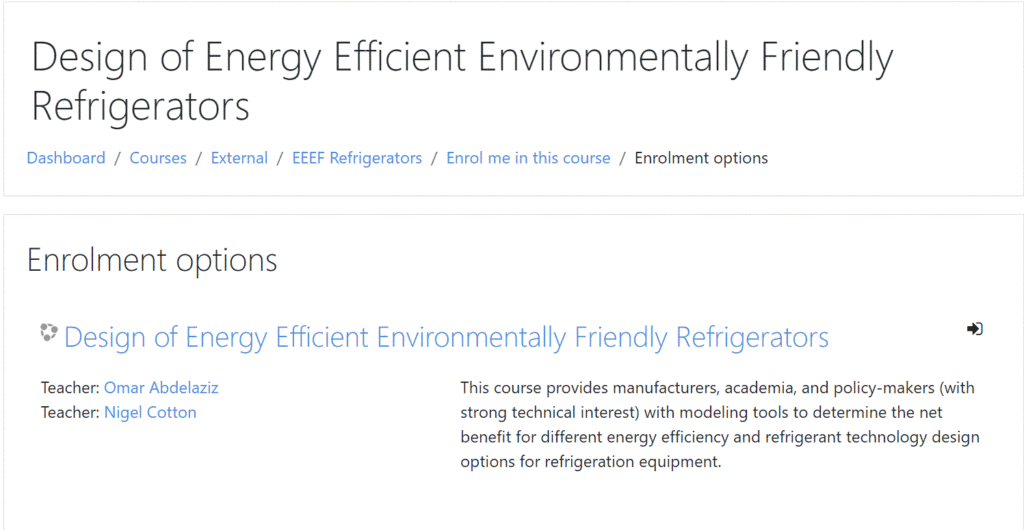
CONTACT US
Subscribe to our newsletter
Sign up to receive a quarterly email with updates and new content!
Disclaimer
The information presented in this newsletter does not necessarily reflect the views of UNIDO. Links to external websites are included solely to provide additional information and do not imply any official endorsement of the opinions, ideas, data, or products presented.
Share this:
© 2022 UNIDO Montreal Protocol

